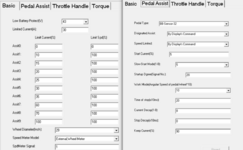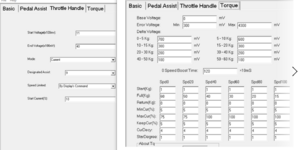I read through every post before I posted. Yes you started out with a discussion of stop decay but put it in conjunction with low start mode as working better together. In the above quote you seem to indicate to start with the slow start mode instead of the stop decay.You take the same approach to PAS as Dave and quite different then me (my Settings) so maybe he can be of more help. And I'm not sure if having an older HD plays into this as well. I have a 2020 '02B
That said. . . If I was going to change anything I would probably try a Work Mode of Undetermined as that is typically the default and I haven't read anything about changing it with better results. Then I would probably try a Slow-start Mode of 4 or 5 as I've had no better results with anything else in my trials. And lastly if you are still looking to try something new I would try a higher Stop Decay. This setting doesn't seem to make changes in small increments so I would try jumps in 20. I went as high as 150 and am now settled at 100. YMMV
I can play with both of them but would prefer separate to begin with. Which one first? The benefits you list are smoother operation, faster acceleration and better battery management but that is pretty subjective. I was hoping for a better description. What make you conclude those things. I am a touchy feely type of person that tunes into how the bike feels vs facts and figures. I have 12 e bikes out there that I program for others and all but mine is a BBSO2 and all are old folks.
I am looking for things like at what speed or point of acceleration do you see the greatest benefits. What subtleties made you settle on a stop decay of 95?
I am trying to learn from your research rather than recreate the same wheel. It saves a lot of time if you know what subtleties to tune into.
Now if I can see no benefits that does not mean that your findings are invalid. Ii might mean that they work great with your approach of high power and low speed limits. vs low power and higher speed limits like my approach to programing. It would be nice to document any limitations rather than one size fits all. I can also try these things on a BBSO2 bike with my normal settings. My settings work great for old folks so far but I am always looking for improvements. The e bike world moves too fast to close your mind.

